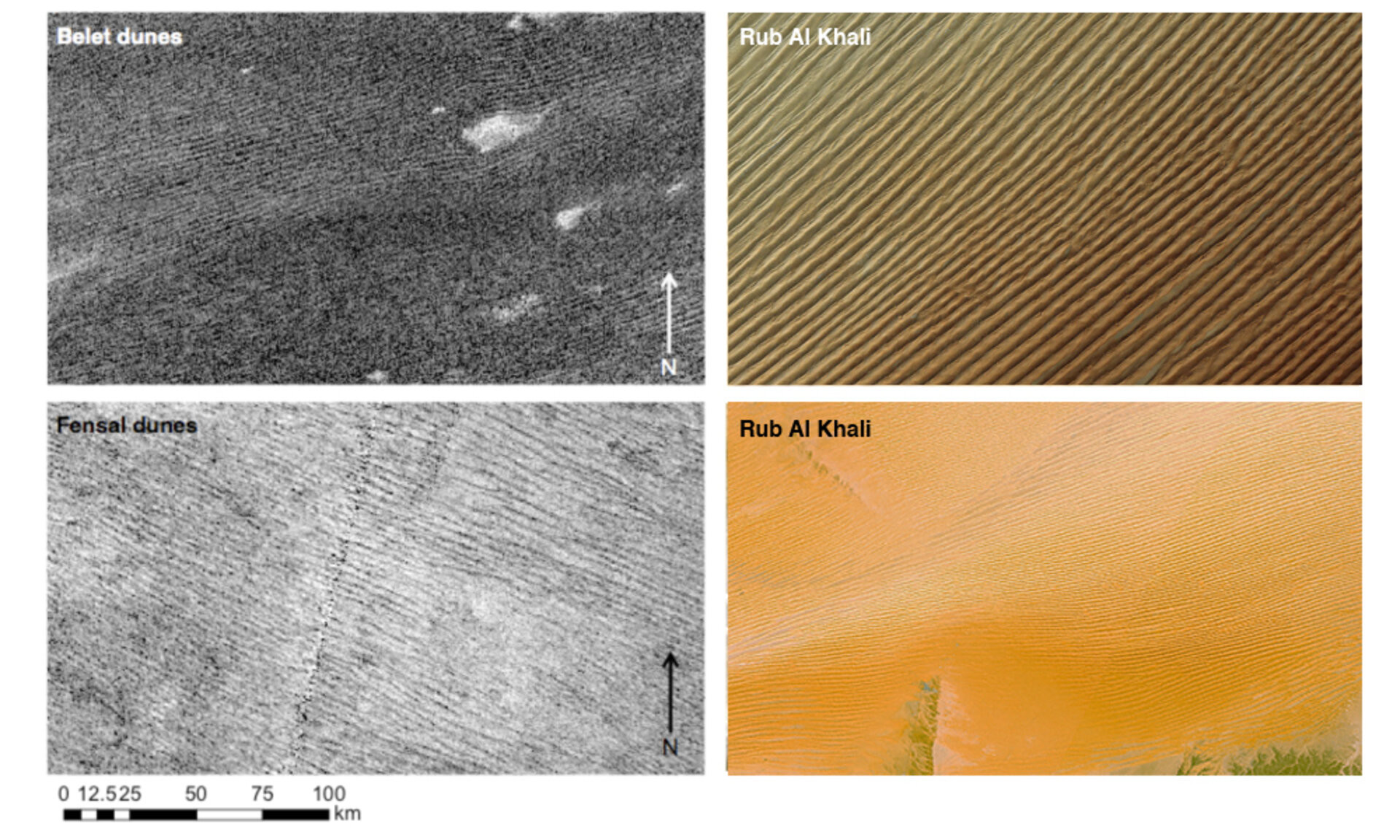Fraser Cain on Nostr: Saturn's moon Titan has familiar-looking dunes covering 13% of its surface, but ...
Saturn's moon Titan has familiar-looking dunes covering 13% of its surface, but unlike Earth, these are made of organic-rich ice, not rock. Scientists have wondered how these millimeter-sized grains could precipitate out of hydrocarbons in the atmosphere. A new paper suggests that they didn't come from Titan's atmosphere but were delivered over eons by comet impacts and debris from Saturn's irregular moons.
https://www.hou.usra.edu/meetings/lpsc2024/pdf/1550.pdf 
Published at
2024-03-18 21:58:03Event JSON
{
"id": "77fe27f9a39a41d63e519a849131e65c0efe2b6f673889d3151e2957cd4c342d",
"pubkey": "ac844e7de79ee4ba0cc0999efe9afb25cc9bd99ba0b5957cf0fd406fcabaf11a",
"created_at": 1710799083,
"kind": 1,
"tags": [
[
"proxy",
"https://m.universetoday.com/users/fraser/statuses/112118928759112487",
"activitypub"
]
],
"content": "Saturn's moon Titan has familiar-looking dunes covering 13% of its surface, but unlike Earth, these are made of organic-rich ice, not rock. Scientists have wondered how these millimeter-sized grains could precipitate out of hydrocarbons in the atmosphere. A new paper suggests that they didn't come from Titan's atmosphere but were delivered over eons by comet impacts and debris from Saturn's irregular moons.\n\nhttps://www.hou.usra.edu/meetings/lpsc2024/pdf/1550.pdf\n\nhttps://m.universetoday.com/system/media_attachments/files/112/118/928/754/808/651/original/3ae1f6cd7858f172.jpg",
"sig": "44415c1474f07776a1e638a32ee5a0539e7ac6858e86a12ed70c9163afd5c79faadfea465d7f2cc0d45435b2f768fbbea31562d8311709760bf79862425f2f7f"
}

